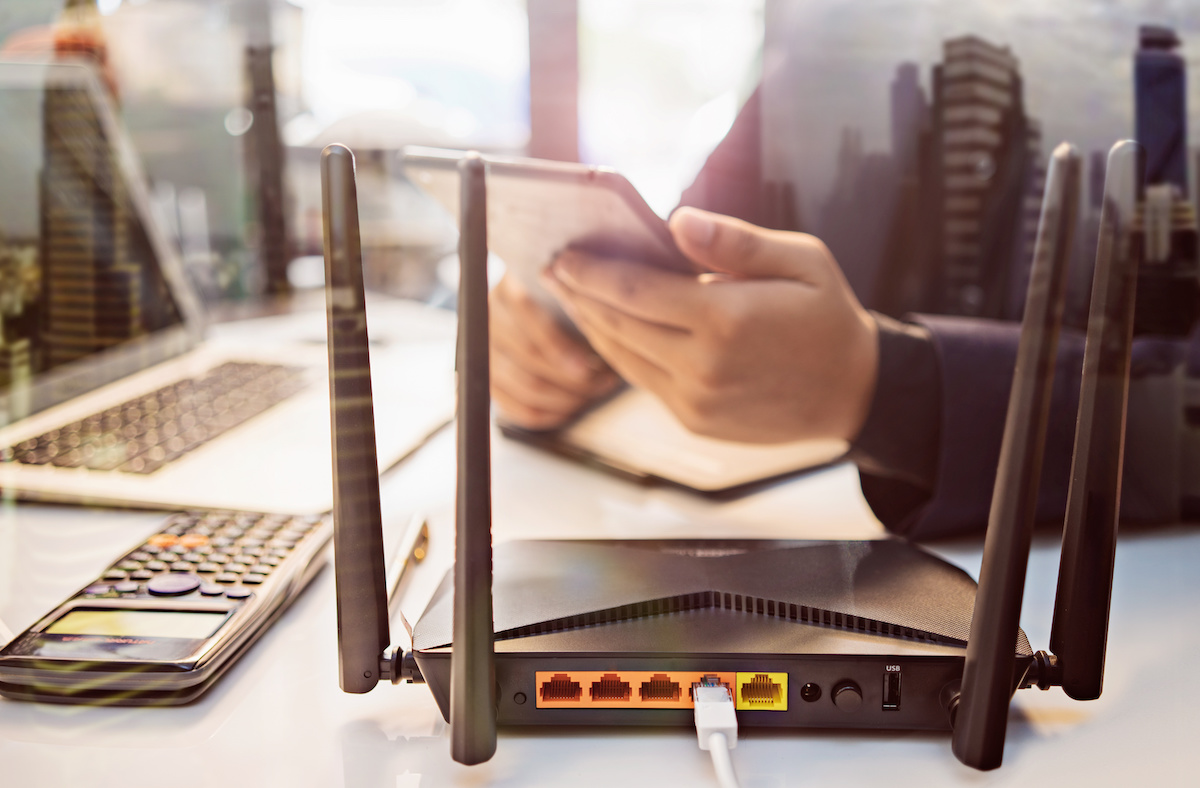ADSL Internet Line
ADSL (Asymmetric Digital Subscriber Line) is an iconic Internet connection technology and is the main residential form of Internet access.
The main advantage of ADSL is the high bandwidth it provides compared to other less expensive options such as dial-up modem, cable or fibre optics. The main disadvantage of ADSL is that users must be connected to a telephone line.
ADSL uses a modulation technique called Discrete Multi-Tone (DMT), in which signals are divided into 256 channels or bands. The technology then allows the bandwidth to be divided according to the user’s needs. The more bandwidth available, the faster the connection will be.
Due to the various frequencies used, ADSL signals are ‘noisier’ than other Internet connection technologies such as cable and fibre.
The advantages of this technology include greater flexibility in choosing a tariff plan: you can choose between fast and slow connections according to your needs. In addition, Internet service providers offer ‘bundled’ options in which a router is provided that allows you, in combination with a telephone line, to start surfing immediately.
Types of ADSL line on the market
Today, there are several options on the market for adsl lines that meet different requirements in terms of need, speed and price.

First of all, there are the fast adsl lines, which are suitable for all surfing needs, both business and family. These are connections that offer high performance and can meet any surfing need in terms of the amount of content downloaded and upload times. For workers, fast ADSL lines are an excellent choice, as they offer sufficient speed to upload data quickly and reliably and to access applications such as Skype, which require a high-speed connection.
Also relevant are dedicated adsl lines, which are suitable for those with a very intensive surfing need. These are broadband lines with large capacities offering high speed and high bandwidth, capable of satisfying any surfing needs related to professions such as infographics or video editing. These types of lines, although more expensive, offer the performance to guarantee large upload and download speeds with fast transfer times.
Activation request and requirements
Applying for an ADSL Internet connection is simple. The first thing to do is to do some research, evaluate the offers and choose the one best suited to your needs.
Once you have chosen the offer best suited to your situation, you will need to proceed with the activation request. To do this, you will need certain documents, such as your utility contract, proof of residence or employment, proof of your VAT status, and a photocopy of your ID.
In addition, a valid IBAN code must also be provided in order to take advantage of certain offers. The connection provider will then provide you with all the necessary instructions and advice to get you up and running as soon as possible.
Activation costs
After you have chosen the operator and the type of contract you want, you need to consider the fixed costs to be paid and any additional charges.
Usually the operator charges a one-off activation fee, often combined with a monthly charge such as a deposit or subscription fee. In addition, it is possible to encounter line installation costs, which may vary depending on the distance between the main cabin and the home.
As far as payments are concerned, there are on the one hand reduced initial costs if a long-term contract is chosen, and on the other hand the possibility of instalments for activation.
Tips for choosing an ADSL line
Choosing an ADSL line can be a challenge, especially if you are not an expert in the field. The key is to start with your connection requirements. The desired connection speed should be considered, with respect to the type of activities you habitually perform (e.g. streaming, online games and file downloads) and the amount of devices connected to the network.
It is also important to check the coverage in your area of residence: ADSL offers vary from country to country, and it may be a good idea to do some research online before choosing an operator.
You may also like
Fibre optics: what is fibre optics for business?
Fibre optics is one of the best options available for setting up a corporate Internet network, as it can ensure a high connection speed and, at the same time, signal stability and highly reliable performance. Fibre optic cables are incredibly resilient and durable, providing remarkable resistance to adverse weather conditions and signal stability that is… Continue reading Fibre optics: what is fibre optics for business?
Guide for fibre optic internet line
What is fibre optics? Optical fibre is a data transmission technology that uses light to transport digital information from one point to another. It works by sending light signals through thin, transparent glass or plastic wires, which are insulated to prevent light scattering. This makes fibre optics much faster and more reliable than other data… Continue reading Guide for fibre optic internet line
Innovative Solar Panels for Residential and Commercial Use
Solar technology has advanced significantly, making it more efficient and affordable for residential and commercial applications. Here are some of the most innovative solar panel models currently available: 1. Bifacial Solar Panels Bifacial solar panels are unique because they can capture sunlight on both sides. This increases their energy production by up to 30% compared… Continue reading Innovative Solar Panels for Residential and Commercial Use
Heat Pumps: Advantages and Disadvantages
Heat pumps are increasingly popular as an energy-efficient way to heat homes, but like any heating system, they come with pros and cons. Advantages Disadvantages In conclusion, while heat pumps offer substantial energy savings and environmental benefits, their high upfront cost and performance in cold climates should be carefully considered before making a purchase.
Electricity and Gas Supply for Commercial Businesses and Restaurants
Energy supply is a critical aspect of running a successful commercial business or restaurant. Electricity and gas power everything from kitchen appliances and lighting to heating and air conditioning. Choosing the right energy supply options can significantly impact operational costs, efficiency, and sustainability. This article will explore the key considerations for electricity and gas supply… Continue reading Electricity and Gas Supply for Commercial Businesses and Restaurants
Energy Supply for Businesses: Gas and Electricity Options
Energy supply is a critical component of running any business, regardless of size or industry. The choice of gas and electricity providers can significantly impact operational costs, efficiency, and even environmental footprint. This article will explore the different types of energy supply options available for businesses and outline the steps required for new activations or… Continue reading Energy Supply for Businesses: Gas and Electricity Options
